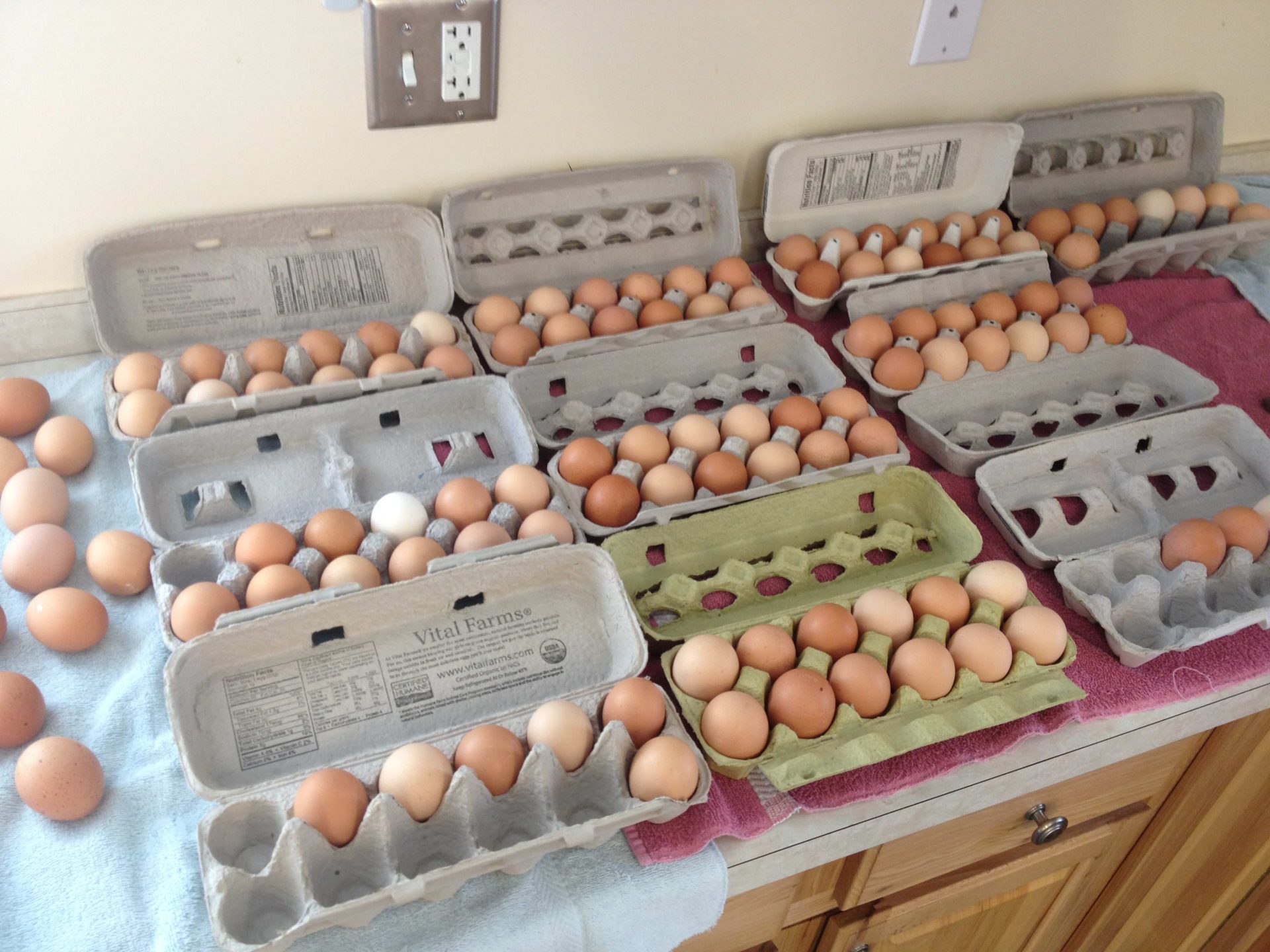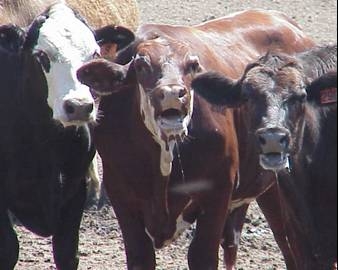
Shake a bush at your next farming conference, and see how many wanna-be chicken farmers fall out. In 2013 alone, Suzanne McMinn’s Chickens in the Road and Lisa Steele’s Fresh Eggs Daily were each best selling books, and the cover of Kristin Kimball’s hit farmemoir The Dirty Life pictured her with a chicken cradled beneath one arm. Murray McMurray’s hatchery is so nice they named it twice, and from its glorious website one can order breeds as whimsical as Silver Laced Wyandottes to sturdy New Hampshires to fanciful Blue Andalusians.
But what makes us so clucking crazy about laying hens? As Josh Vaillancourt explains in his excellent (ok, ok, eggscellent) article Small Farm Egg-Onomics, romantic notions of chicken ownership frequently wither beneath the gaze of financial scrutiny. Though I’ve raised laying hens for decades, our farm remains just as vulnerable to these economic realities as any upstart poultry ingenue. So now that Josh has provided a healthy dose of dollars and cents, allow me to ‘lay’ a few hard-won opinions on you.
1) Everyone loves chickens… as long as they’re laying
How well did your hens perform this year? 75% laying rate? 70%? Because if your percentage was less than 70, chances are you’re losing money… an experience I know all too well. A farmer can easily work three, four or five hours each day doing everything right, hauling water, gathering eggs, pitchforking the bedding. Yet there’s still no magical button that will make our hens lay. How can we best stack the deck in our favor?
Ironically, it was the Byrds who sang “To everything, turn, turn, turn.” I’ve never met a newbie chicken farmer who wants to hear this, but my most profitable years are when the hens are strictly culled after twelve months, and immediately replaced with a new flock. (An even better idea is to stock hens at 6 month intervals, so there’s no lapse in cash flow if a flock slows down early). As most chicken farmers know, hens lay considerably fewer eggs in year two. On our farm, the birds are processed and sold as stew hens at $12 apiece. In our nearby urban market, we can’t come close to meeting demand.
Our customers are more than happy to pay for authentic free-range eggs and flavorful young stew hens. But when it comes to excuses and disappointment, they refuse to pay me a nickel. By definition, laying hens need to be laying. If we plan to remain sustainable, we’ve got to keep those eggs rolling.
2) Chickens are big fat Time Vampires
Things I Like: Opening a gate into a new pasture, and watching my cattle eat grass instead of buckets of grain. Checking on my pigs, knowing that none have been eaten by hawks. Filling the lambs’ salt tub, without discovering they’ve eaten their own eggs.

Do you see where I’m going with this? Chickens are ‘Time Vampires,’ sucking energy, resources and opportunities away from many farms. While cattle, pigs and sheep undoubtedly have their own share of problems, compared to everything that can go wrong with chickens, raising these species seems practically effortless. With 1,000 layers on our farm (in my opinion, an economy of scale kicks in at around 400 birds), daily chicken chores typically require 3 people devoting 2 hours per day. This runs the gamut from feeding to moving poultry nets to cartoning eggs.
At the end of each day, when 750 eggs have been cartoned and ready to sell, it’s reassuring that $300 gross more than offsets the daily overhead. The fact remains, however, that these chores MUST be done each day. No short cuts, no days off. In a pinch, I could spend 5 minutes moving my cattle and sheep into a new field, and they’d be fine for the rest of the afternoon. The same goes for the hogs, which, in an emergency, could probably go unsupervised for days on end as long as their feeders were full.
The same CANNOT be said about thousands of chickens free-ranging on pasture. Left unsupervised for an entire day, the results would range from light-hearted mayhem to full-on catastrophe. From personal experience, I can recount scenarios so graphic they would terminate cutesy Facebook photos from here until 2027: “Aww, that chicken’s wearing a little Santa hat! But, wait a minute… are… are those its intestines???”
In short, if you want to raise chickens successfully, you’re volunteering for a lifestyle of guaranteed hard work, little room for error, and no days off. I naively climbed on this ride when I was twenty-two, and seventeen years later those darn hens still haven’t let me off.
3) It’s difficult to raise chickens year-round
One foot of snow; eleven inches of chicken. Any questions?
(I’ll address this in greater detail in a forthcoming blog, “Why Don’t Chickens Lay Eggs In The Winter?”)
4) No one like to shovel chicken manure
When it comes to poultry, it takes two pounds of grain for every one pound of gain. In other words, what doesn’t become eggs or meat becomes expensive chicken poop. How often do we pause to consider this fact: We take two pounds of perfectly good food, and trade it for one pound of chicken. A trade, by the way, which requires additional time, energy, risk and expense. In a way, it reminds me of a kid who excitedly trades a dollar bill for two shiny quarters. “Look mom! It’s worth twice as much!” Where in nature do we find such unsustainable practices?
Fortunately for grass farmers, we can capture close to 100% of the value of this manure in the form of fertilizer… just so long as the chickens spread it themselves. (For more on how we do this, check out this article “Mob Grazing With Chickens” and this post on my blog.) On our farm, true sustainability is found in our herbivores, the sheep and cattle. Our pigs, chickens and turkeys serve as glorified soil enhancers, helping us replace generations of nutrients that were eroded, plowed and mismanaged away. If we simultaneously enhance soil fertility while producing the planet’s best eggs, poultry and pork chops, then what’s not to like? Just don’t catch yourself shoveling chicken manure (which is how most confinement operations are managed), and chances are you’re doing it right.
In Conclusion
If you dream of laying hens as a profitable enterprise, you’re not alone. I’m entirely convinced of its viability, and have been raising them (mostly) successfully on pasture for over 15 years. The rewards can be great, from job satisfaction to customer praise to positive cash flow.
But in order to succeed, you must exhibit almost draconian discipline in your management. And that takes a heapin helpin of introspection and honesty. Ask yourself these questions:

Can you feed 500 hens at dawn, ring an egg-eater’s neck at noon, and shoot a fox at dusk? Can you ensure that your hens have fresh water on zero degree mornings, as well as 100 degree days? Are you a Type-A time manager who can properly introduce new flocks every six months, while processing older birds the week they turn one year old? In short, do you ‘have it in you’ to perform the unsexy aspects of chicken farming?
If you can answer ‘yes’ to these questions, then chances are you can run a sustainable pastured egg operation. When properly fed and tended, pastured hens will produce more than enough eggs to turn a profit, especially at $5 to $6 per dozen. The devil, as in any business, lurks in the details. And for all their feathery cuteness, chickens are the devil incarnate when it comes to farmers who cut corners.
So stay punctual, enjoy the fresh air and marvelous singing hens, and plan, plan, plan ahead. Yes, you’re bound to break a few eggs along the way. Everybody does. But rest assured that when you do, it’s bound to be the most satisfying omelette you’ve ever tasted.
 Forrest Pritchard is the author of Gaining Ground. Published this past spring, it has received numerous thumbs up, including it’s most recent when it was named a top read for 2013 by the Washington Post! Check it out!
Forrest Pritchard is the author of Gaining Ground. Published this past spring, it has received numerous thumbs up, including it’s most recent when it was named a top read for 2013 by the Washington Post! Check it out!








Lovely article.
In our experience, it’s the “Time Vampire” part that seems to make them the most unprofitable. Where do those 6 person-hours a day go? It was running us about 2 hrs/day for 200 birds, which cost more than feed. 6 hours for 1000 cuts labor costs by 1/3, so clearly something you’re doing is working better.
Would you please be more specific about how economies of scale factor in?
With a flock that size, how did you manage disease? Death loss was our other biggest theoretically controllable cost.
Thank you.
The economy of scale kicks in around 400 birds for us because of infrastructure and chore costs intersecting with a flock size that maintains a reasonable pecking order. More anecdotal than anything else, perhaps.
As far as disease goes, I posed this question to my farmhand of 20 years: “Can you ever remember our hens getting pneumonia or avian flu or cocsidiosis (sp?)” and he shook his head ‘no’. I think constant access to the outdoors, fresh bedding and aeration of the coop floor and clean feeders/waterers are the key here. As far as death loss, 99.9% is due to predation and accidents (smothered, trampled, etc.), with unexplained death/disease being extremely rare.
Comments are closed.